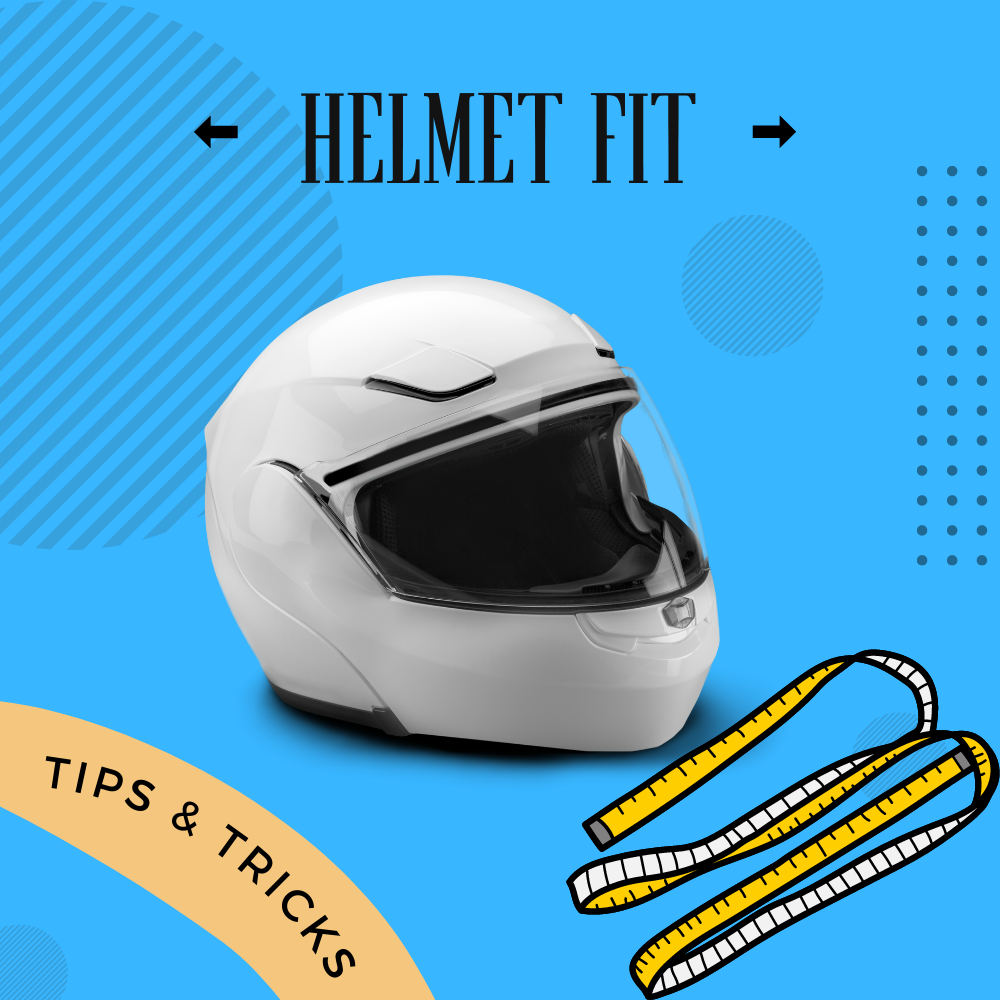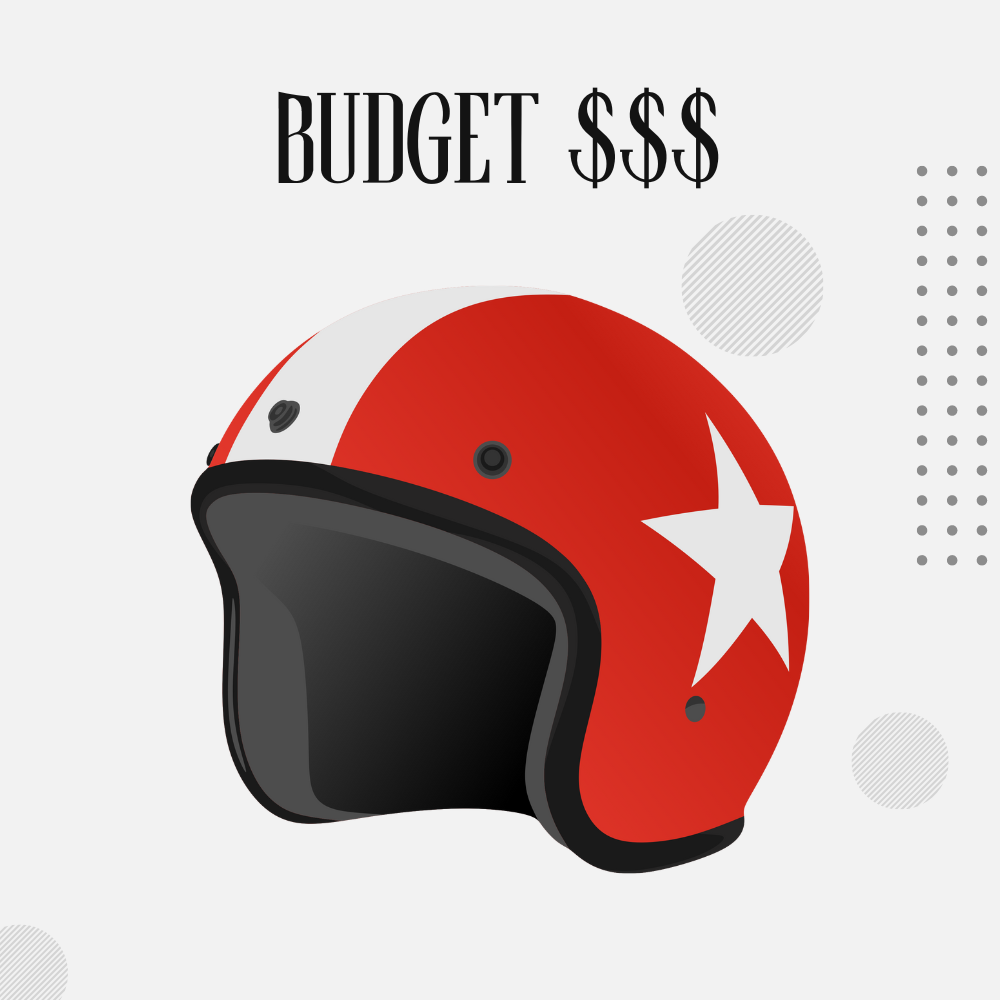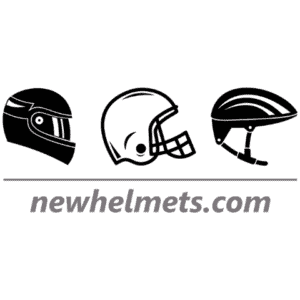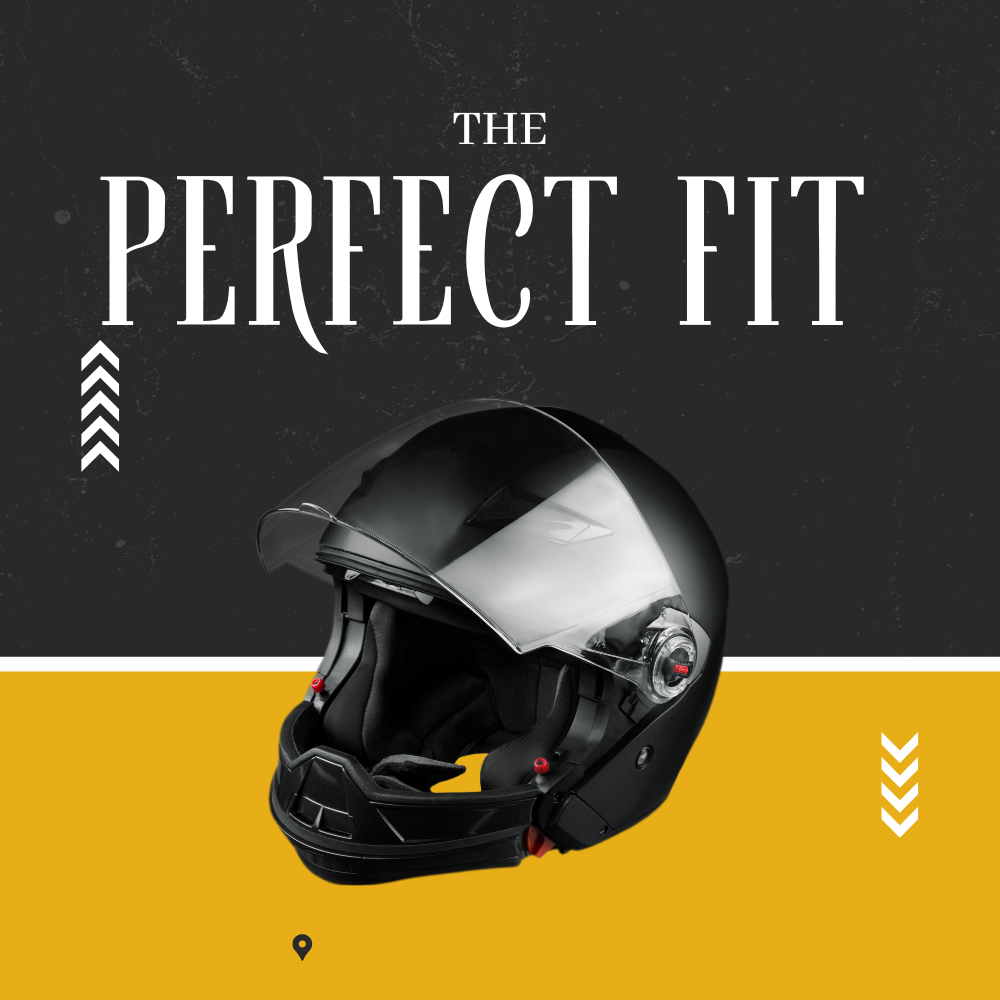Regarding motorcycle helmets, finding the perfect fit for your needs is crucial. A well-chosen helmet ensures your safety on the road and enhances your riding experience. In this comprehensive guide, we will provide valuable tips to help you select the right helmet that fits perfectly and give you some other vital considerations you may need to make to suit your individual requirements and fits within your budget.

First of All, Find Your Perfect Fit
Finding the perfect fitting helmet ensures optimal comfort and safety while riding. Fortunately, most reputable helmet brands provide size guides to assist riders in making the right choice. The process is straightforward and can be accomplished by following these steps:
- Measure Your Head Circumference: Gather a flexible tape measure and find a comfortable, well-lit space. Standing in front of a mirror can be helpful during this process. Start by wrapping the tape measure around the circumference of your head, ensuring it is positioned approximately one inch (or 2.54 centimetres) above your eyebrows. Maintain a horizontal alignment to get an accurate measurement.
- Record the Measurements: Take note of the measurement in both centimetres and inches. Different size guides may use either measurement unit, so having both values on hand will be helpful during the selection process.
- Consult the Size Guide: With your head measurement recorded, consult the size guide provided by the helmet manufacturer. For example, here is the size guide of Arai Helmets. This guide will typically present a range of head circumferences corresponding to different helmet sizes. Find the measurement that aligns with your recorded head circumference.
- Choose the Right Size: The proper helmet size is crucial for a comfortable fit. If your measurement aligns exactly with one dimension in the guide, that size will likely be the best fit for you. However, if you find that your measurement falls between two sizes, it’s recommended to try the smaller size first. Helmets tend to break in and conform to your head shape over time, so opting for a snugger fit initially can lead to a more customized and comfortable fit as you wear it.
- Try the helmet On: Whenever possible, try the helmet on before making a final decision. Visit a local motorcycle gear store or authorized dealer that stocks the helmet model you’re interested in. Wearing the helmet will provide a firsthand experience of its fit and comfort level. Ensure the helmet rests securely on your head without any pressure points or excessive movement. A properly fitting helmet should feel snug but not overly tight. You could always watch a helpful video about helmet sizing.
- Consider Brand Variations: Remember that different helmet brands may have slight variations in sizing, even if the head circumference measurements seem similar. Trying on helmets from various brands can help you find the one that suits your head shape and preferences best.
Determine Your Helmet Requirements
Before diving into the world of helmet shopping, assess your specific needs. Consider your riding style, frequency of use, and the type of motorcycle you ride. Different helmets cater to various purposes, such as full-face helmets for general use, modular helmets for versatility, and off-road helmets for adventure riding.
Prioritize Safety Certifications
Safety should always be a top priority when choosing a helmet. Look for helmets that meet recognized safety standards, such as the Department of Transportation (DOT) in the US, the Economic Commission for Europe (ECE), or the Snell Memorial Foundation. These certifications guarantee that the helmet has undergone rigorous testing for impact protection.
Consider Helmet Shape
People have different head shapes, and helmets are designed to accommodate them. Determine if your head shape is round, intermediate oval, or long oval, and choose a helmet that matches your head shape for a more comfortable fit.
Comfort is Key
Beyond safety and fit, comfort plays a significant role in helmet selection. Look for features like well-padded interiors, adjustable ventilation, and moisture-wicking liners. A comfortable helmet can make a world of difference during long rides.
Assess Helmet Weight
The weight of a helmet affects your comfort level, especially during extended periods of riding. Lightweight helmets are ideal for reducing fatigue, but always ensure they maintain the necessary safety standards.
- Full-Face Motorcycle Helmets: Full-face helmets, which offer the most coverage and protection, typically weigh between 3.5 to 5.5 pounds (1.6 to 2.5 kilograms).
- Modular Motorcycle Helmets: Modular helmets, also known as flip-up helmets, have a movable chin bar that allows riders to flip up the front section. They generally weigh between 4 to 6 pounds (1.8 to 2.7 kilograms).
- Open-Face Motorcycle Helmets: Open-face helmets, also called 3/4 helmets, cover the top and sides of the head but leave the face exposed. They typically weigh around 3 to 4 pounds (1.4 to 1.8 kilograms).
- Half Motorcycle Helmets: Half helmets, providing the least coverage, weigh approximately 2 to 3 pounds (0.9 to 1.4 kilograms).
- Off-Road Motorcycle Helmets: Off-road helmets, designed for dirt biking and motocross, have a lightweight construction and typically weigh between 3 to 4 pounds (1.4 to 1.8 kilograms).
Check Visor and Shield Options
Consider the visor and shield options available. Some helmets come with an anti-fog or photochromatic shield, enhancing visibility in different weather conditions. A quick-change visor mechanism can also be beneficial, allowing you to adapt to varying light conditions.

Budget Wisely
Set a budget range before shopping for a helmet. High-quality helmets may come at a premium, but compromising on safety is never advisable. Focus on finding the best helmet within your budget that meets your safety requirements.
Research and Read Reviews
Before making a purchase, research different helmet brands and models. Read reviews from other riders to gain insights into their experiences with specific helmets. Valuable feedback from real users can help you make an informed decision.
Most Importantly, Always Try Before You Buy
Whenever possible, visit a local motorcycle gear store to try on helmets. Trying them on in person allows you to assess comfort, fit, and overall feel, which is essential in making the right choice.
Choosing the right helmet is a decision that directly impacts your safety and riding pleasure. By determining your specific needs, prioritizing safety certifications, finding the perfect fit, and considering comfort and budget, you can confidently select a helmet that suits your individual requirements. Whether you’re a seasoned rider or a beginner, investing in a high-quality, well-fitting helmet is a decision that will pay dividends in terms of protection and enjoyment on the road.


